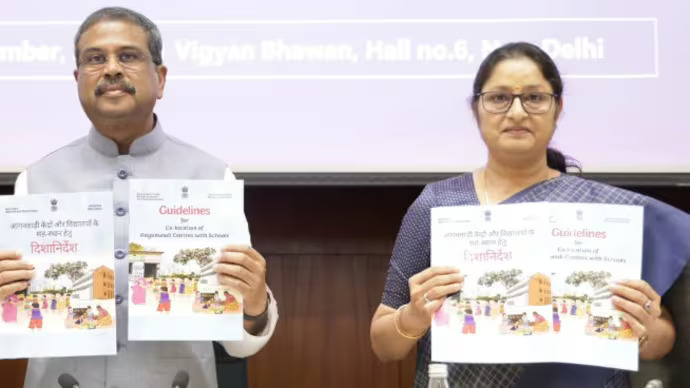Centre to merge anganwadis with schools, harness AI to reimagine early education
By | Education | 04-Sep-2025 12:31:36

News Story
In a sweeping reform set to reshape India’s education landscape, the Central
government has unveiled new guidelines that bring Anganwadi centres and primary
schools under one roof, while pushing artificial intelligence and broadband
access as key enablers of learning.
Announcing the initiative at Vigyan Bhavan in
New Delhi, Education Minister Dharmendra Pradhan said the move will bridge the
gap between early childhood care and formal schooling, ensuring children
transition seamlessly from pre-school to the classroom. Women and Child
Development Minister Annapurna Devi, present at the launch, called it a
“transformational step” aligned with Prime Minister Narendra Modi’s vision of a
“Developed India.”
Linking care, nutrition, and learning
The guidelines combine education, health, and
nutrition into a single framework, acknowledging that the foundation for
lifelong learning begins well before a child enters school. Officials said the
integrated model will not only reduce dropout rates but also raise learning
outcomes, particularly at the critical foundational stage.
“Future generations cannot be secured unless
we take care of pregnant mothers, newborns, and pre-school children,” Annapurna
Devi said, proposing a special learning module to help Anganwadi workers—many
of whom have studied only till class 12—pursue further education.
Digital leap for rural classrooms
Technology is set to be the backbone of the
initiative. Annapurna Devi urged the adoption of artificial intelligence tools
to help Anganwadi workers teach young children in Indian languages, making
lessons more interactive and accessible.
The education ministry has also announced
plans to expand broadband connectivity to nearly two lakh private and
government high schools over the next three years, ensuring rural and
semi-urban classrooms gain access to resources previously limited to cities.
Building on grassroots strength
Recent studies by ASER and PARAKH have
revealed a striking trend—rural children outperforming their urban peers in
certain learning areas. Officials credit this to the groundwork laid by
Anganwadi workers, whose role as the first teachers in villages has been
pivotal.
The numbers, however, are daunting. Nearly 15
crore children in India are in the pre-school and early primary years. Their
health and education are at the heart of flagship programmes like Nipun Bharat and the national vision of Developed India 2047.
By aligning Anganwadis with schools, the government is attempting to weave early care, nutrition, and education into a unified system—one that prepares children not just to enter school, but to thrive in it.